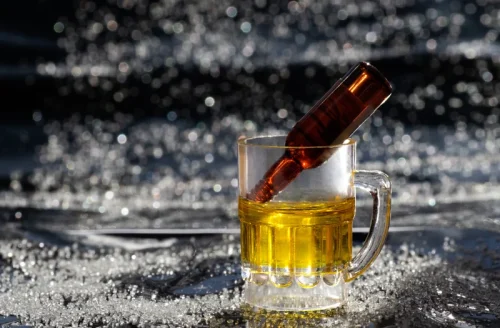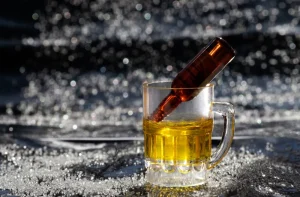
Sedative-hypnotic drugs are the primary agents for treatment of alcohol withdrawal syndrome because they are cross-tolerant drugs that modulate GABA functions. These medications commonly include benzodiazepines, barbiturates, propofol, dexmedetomidine, and (in rare cases) ethanol. Withdrawal syndromes occur when the body responds to the reduction or cessation of a substance after prolonged use, indicating physical dependence. These syndromes arise due to the body’s physiological adaptation to continuous substance exposure, with symptoms varying based on the type of substance and duration of use. Common withdrawal symptoms range from mild discomfort, such as those seen with caffeine and opioids, to severe, life-threatening conditions, particularly with alcohol and benzodiazepines.
- It is important to note that some of the included studies exclusively selected low‐risk patients based on stringent exclusion criteria.
- Psychiatric evaluation is strongly recommended to rule out mental health concerns such as suicidal ideation, major depression, and polysubstance abuse.
- The prescription of benzodiazepines to treat anxiety disorders among thoserecovering from alcohol and other drug dependencies is controversial.
- Penders et al. interviewed six patients with a single alcohol or substance dependence included in their program and three support persons who were all generally positive about home detoxification 15.
- Cognitive behavioural therapy (CBT) is a talking therapy that uses a problem-solving approach to alcohol dependence.
Symptoms of Withdrawal
- Unlike methadone, naltrexone does not provide patientswith a beneficial mood-altering effect.
- When the onset of withdrawal like symptoms or delirium is after 2 weeks of complete cessation of alcohol, the diagnosis of alcohol withdrawal syndrome or DT becomes untenable, regardless of frequent or heavy use of alcohol.
- • Significant reduction in median daily alcohol consumption in grams (44.8 vs. 4.1), median percentage heavy drinking days (35.7 vs. 0) and the median short inventory of problems—score.
Alcohol withdrawal symptoms are a part of alcohol dependence syndrome and are commonly encountered in general hospital settings, in most of the departments. The severe complicated alcohol withdrawal may present with hallucinations, seizures or delirium tremens. Benzodiazepines have the largest and the best evidence base in the treatment of alcohol withdrawal, and are considered the gold standard. Others, such as anticonvulsants, barbiturates, adrenergic drugs, and GABA agonists have been tried and have evidence. Symptom triggered regime is favoured over fixed tapering dose regime, although monitoring through scales is cumbersome.
The Role of MAT in Recovery
More severe reactions could include myocardial infarction, congestive heart failure, respiratory depression, and death. It also is not recommended in patients with peripheral neuropathy, seizures, or cirrhosis with portal hypertension. Hepatotoxicity is a rare but potentially fatal adverse effect.8 Some experts recommend that baseline liver function tests should be obtained, with repeat testing at two weeks, three months, six months, and then every six months thereafter. Because of these significant restrictions and problems with compliance, disulfiram is not recommended for treating alcohol dependence, particularly in the primary care setting.6 Disulfiram is FDA pregnancy category C.
Are you looking for information on drug and alcohol treatment?
Themaintenance dose is adjusted individually; 0.25 to 0.5 gram once a day isusually adequate. The patient should avoidmedications that contain alcohol (e.g., tinctures, elixirs, and someover-the-counter liquid cough and cold preparations, which contain as muchas 40 percent ethanol). Thesemedications should not be used alone for treatment of withdrawal because theydo not prevent seizures or DTs.

You should also try to avoid substances that give off alcoholic fumes, such as paint thinners and solvents. Keeping a “drinking diary” may be recommended so you can record how many units of alcohol you marijuana addiction drink a week. You may also be given tips about social drinking, such as alternating soft drinks with alcoholic drinks when you’re out with friends. If you are worried about your drinking or have had an alcohol-related accident or injury, you may be offered a short counselling session known as a brief intervention. Another criticism is the strict adherence to the 12-step model followed by most abstinence-only treatment facilities. This focuses on the existence of God or some form of a higher power, which isn’t a concept that is easily accepted by everyone.

Neurological Improvements With Abstinence
Oxazepam (Serax) orlorazepam (Ativan) are acceptable alternatives difference between drugs and alcohol with patients who have severeliver disease because neither is metabolized by the liver. Many physiciansprefer chlordiazepoxide over diazepam (Valium) for alcohol detoxificationmedication because paradoxical rage and behavioral dysinhibition are morecommon with diazepam than with chlordiazepoxide. Other benzodiazepines suitablefor alcohol withdrawal are clonazepam (Klonopin) and chlorazepate (Tranxene).

Detox, though often hugely important, is not a substitute for additional rehabilitation efforts. Comprehensive rehab care can take place in a residential/inpatient or outpatient setting, depending on individual needs. No matter what the setting, formal substance use treatment commonly begins with a period of detox, followed by ample behavioral therapeutic interventions and continued medical care, as needed. It is not always that straightforward to predict who is at the highest risk for severe withdrawal and withdrawal complications.
There is growing awareness of the benefits of treating patients in their own home, yet home‐based detoxification of individuals with substance use disorder has received limited attention. While home‐based alcohol detoxification seems to be safe and effective for patients without severe withdrawal, little is known about detoxification for illicit or polysubstance dependence. This review synthesises recent findings on home‐based detoxification for alcohol and other substances. To this end, we searched PubMed for information on each substance, adding other terms such as “alcohol dependence”, “alcohol abuse”, or “alcoholism”.

As it is often said in the addiction treatment profession, there is a clear separation between abstinence and sobriety. Abstinence can be defined simply as physical free from mind-altering substances. Sobriety includes abstinence, but also encompasses much more than just stopping drinking or abusing drugs.
Recently, ondansetron has been shown to decrease alcohol consumption in patients with AUDs. In a double-blind, randomized, placebo-controlled clinical trial, 217 patients who received ondansetron 1, 4 and 16 μg/kg twice a day for 11 weeks showed fewer drinks in comparison to placebo control (Johnson et al., 2000). They suggested that 4 μg/kg ondansetron twice a day was effective in patients with early onset alcoholism and craving (Johnson et al., 2002).